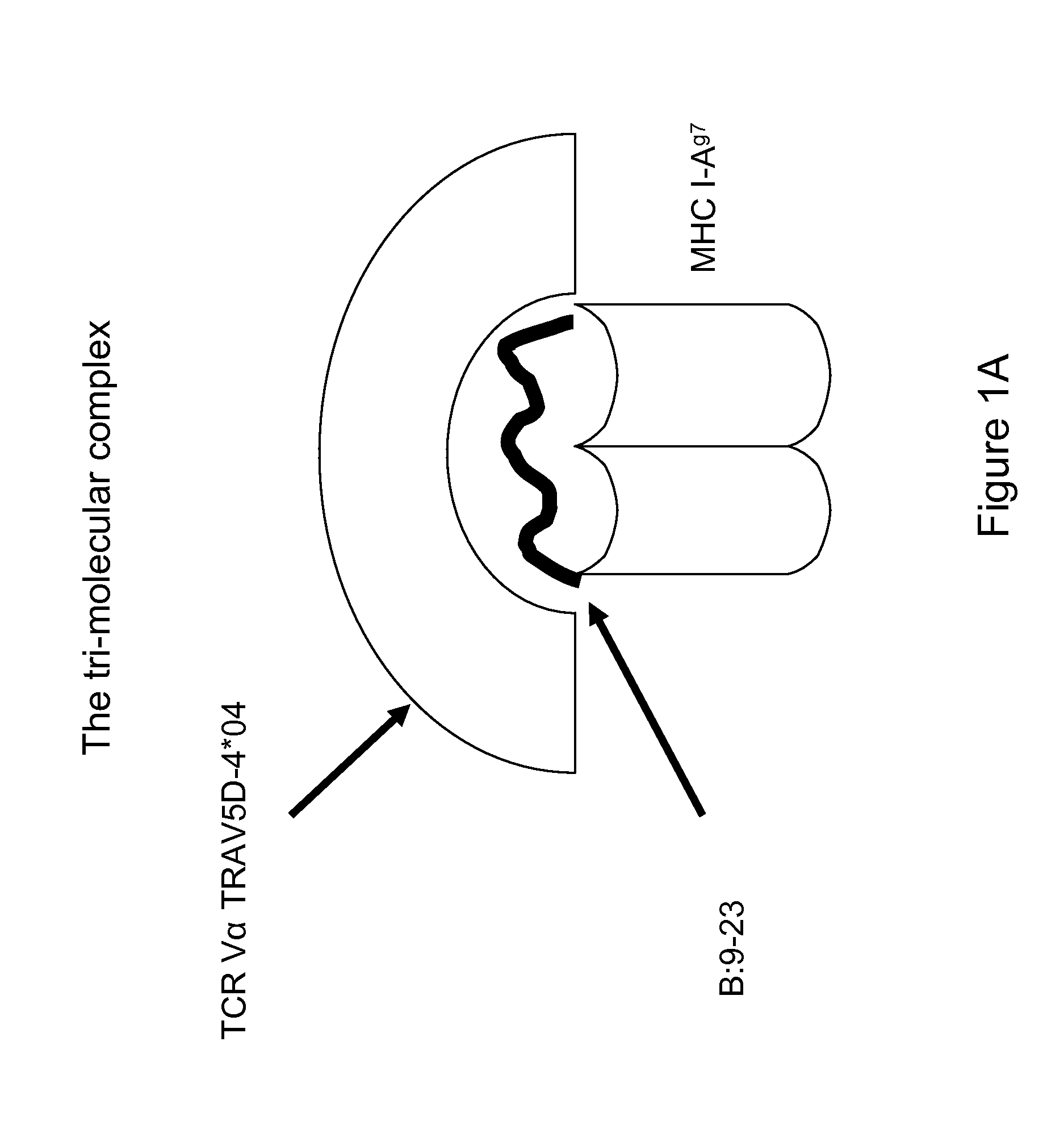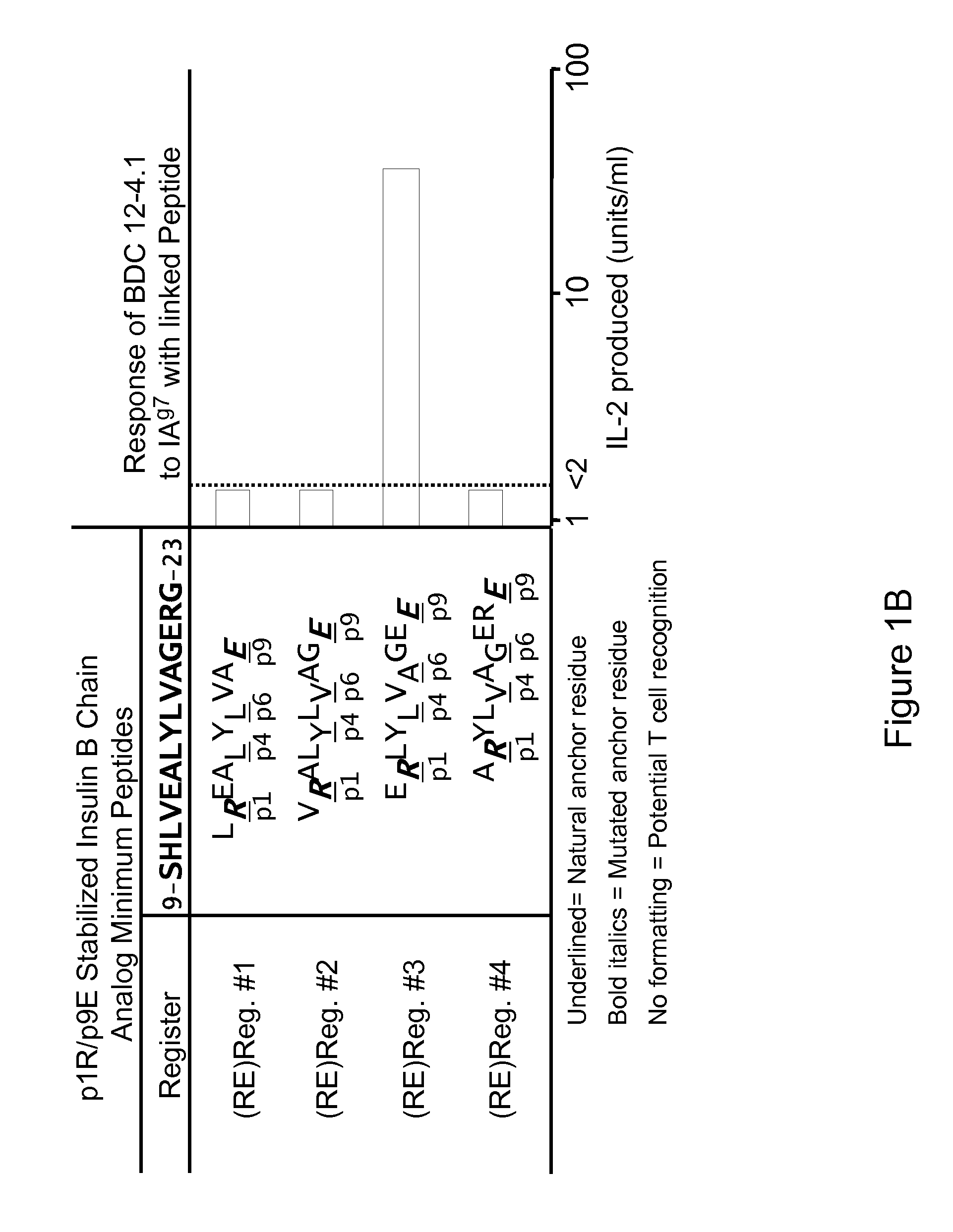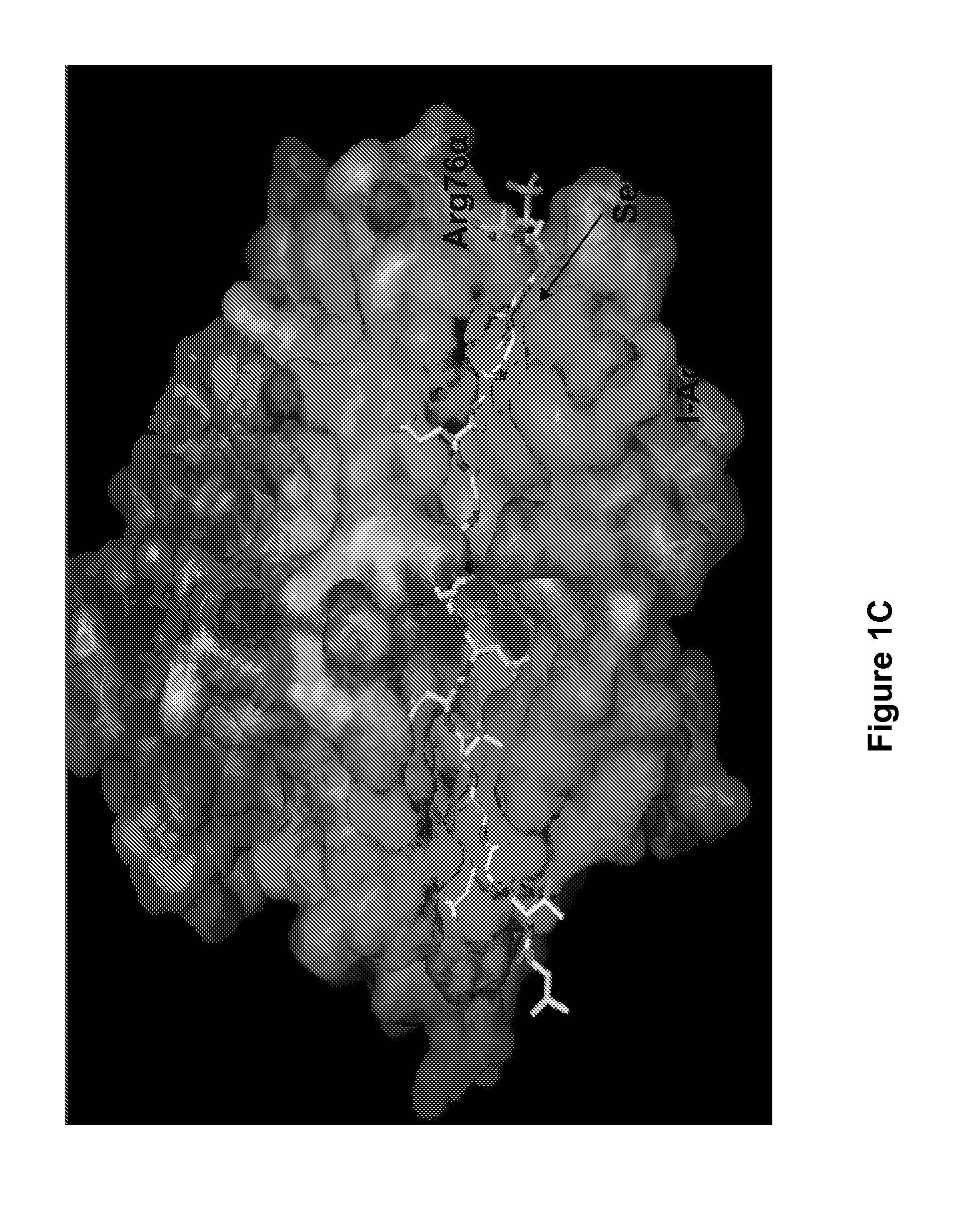Therapeutic compositions and methods for the prevention of autoimmune diseases
a technology for autoimmune diseases and compositions, applied in immunological disorders, antibody medical ingredients, metabolism disorders, etc., can solve the problems of life-threatening, chronic, debilitating, and treatment of autoimmune diseases that have devastating long-term side effects
- Summary
- Abstract
- Description
- Claims
- Application Information
AI Technical Summary
Benefits of technology
Problems solved by technology
Method used
Image
Examples
example 1
[0094]This example illustrates that the I-Ag7-insulin autoantigenic peptide complex is able to stimulate a T cell immune response in vitro.
[0095]The autoantigenic peptide B:12-22RE(Reg3) having an amino acid sequence VERLYLVCGEE (SEQ ID NO:8) (also referred to as B:12-22RE or B:12-22Reg3) was covalently tethered to the beta chain of I-Ag7 and fixed in the specific register of I-Ag7 to be targeted by the pathogenic T cell receptor. Similarly, Hen Egg Lysozymel 1-23 having an amino acid sequence MKRHGLDNYRGYG (SEQ ID NO:10) (“HEL 11-23) was covalently attached to the I-Ag7 to provide the I-Ag7-HEL11-23 control complex.
[0096]Taking advantage of NFAT regulation of both LacZ and IL-2 genes, MHC-antigenic peptide complex-induced IL-2 production can be estimated by measuring LacZ activity in BWZ.36 derived T cell hybridomas by using chlorophenol red-P-D-galactopyranoside (CPRG) as the LacZ substrate. 96-well plates (flat bottom) were coated with I-Ag7-B:12-22RE-Reg3 complex or the control ...
example 2
[0098]This example illustrates that the I-Ag7-insulin autoantigenic peptide complex specifically stimulates an immune response in cells expressing TRAV5D-4*04 TCR.
[0099]As explained above in Example 1, 96-well plates were coated with the I-Ag7-B:12-22RE-Reg3 complex or I-Ag7-HEL11-23 as control at 4° C. for overnight; plates were washed three times with PBS; and 20,000 cells (BDC12-4.1 or BDC12-4.4 or BDC2.5 hybridoma cells) were loaded into coated plates. BDC12-4.1 and BDC12-4.4 cells express the TRAV5D-4*04 containing TCR and recognize the B:9-23 peptide, whereas the BDC2.5 hybridoma cells do not express this TCR and recognize the non-insulin islet antigen HRPI-RM, not the insulin B:9-23 peptide. After overnight incubation, cells were washed and lysed and absorbance recorded in duplicate wells as described in Example 1.
[0100]As shown in FIG. 3, plate bound I-Ag7-B:12-22RE-Reg3 complex stimulated both BDC12-4.1 and BDC12-4.4 hybridoma cells, but did not stimulate the BDC2.5 hybrido...
example 3
[0101]This example illustrates that wild type NOD mice and DKO mice (NOD mice with both wild-type insulin genes knocked out) develop high titer antibodies to the I-Ag7-insulin autoantigenic peptide complex after immunization with the complex.
[0102]Animals: NOD mice in which both native insulin sequences have been knocked out (Double Knock Out or DKO), but that contain a mutated proinsulin transgene (insulin B:Y16A substitution) were used for immunization (4). These mice were chosen because they recognize the native insulin Peptide B:9-23 as foreign and develop higher titers of antibodies against the I-Ag7-B:9-23 complex. In addition, these mice do not spontaneously develop insulin autoantibodies (IAA's). Young (3-4 weeks old) wild type NOD mice were also immunized to test if antibodies that block presentation of B:9-23 to T cell receptors can be generated in the non-mutated mice.
[0103]Target molecules for antibody production: The MHC class II molecule with covalently linked peptide ...
PUM
| Property | Measurement | Unit |
|---|---|---|
| Current | aaaaa | aaaaa |
| Therapeutic | aaaaa | aaaaa |
Abstract
Description
Claims
Application Information
 Login to View More
Login to View More - R&D
- Intellectual Property
- Life Sciences
- Materials
- Tech Scout
- Unparalleled Data Quality
- Higher Quality Content
- 60% Fewer Hallucinations
Browse by: Latest US Patents, China's latest patents, Technical Efficacy Thesaurus, Application Domain, Technology Topic, Popular Technical Reports.
© 2025 PatSnap. All rights reserved.Legal|Privacy policy|Modern Slavery Act Transparency Statement|Sitemap|About US| Contact US: help@patsnap.com



